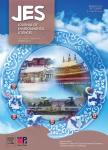Baosteel emission control significantly benefited air quality in Shanghai
Baosteel emission control significantly benefited air quality in Shanghai作者机构:Department of Environmental Science and EngineeringFudan UniversityShanghai 200433China Baoshan Environmental Protection BureauShanghai 201900China Yellow River Shandong BureauJinan 250000China Center for Excellence in Regional Atmospheric EnvironmentInstitute of Urban EnvironmentChinese Academy of SciencesXiamen 361021China
出 版 物:《Journal of Environmental Sciences》 (环境科学学报(英文版))
年 卷 期:2018年第30卷第9期
页 面:127-135页
核心收录:
学科分类:083002[工学-环境工程] 0830[工学-环境科学与工程(可授工学、理学、农学学位)] 07[理学] 08[工学] 070602[理学-大气物理学与大气环境] 0706[理学-大气科学]
基 金:supported by the Ministry of Science and Technology of China(Nos.2016YFC0202700,2016YFE0112200) the National Natural Science Foundation of China(Nos.21527814,91743202) the Marie Sklodowska-Curie Actions(No.H2020-MSCA-RISE-2015-690958)
主 题:Baosteel Emission control Air quality Shanghai
摘 要:As the largest iron and steel producer in China, a part of Baosteel moved out of Shanghai deserves close attention due to its environmental impact. To understand the effect of Baosteel emission control on air quality in Shanghai, daily PM10, PM2.5, SO2, NO2 and CO were measured from 2010 to 2016. Concentrations of pollutants in Baoshan District presented a decreased trend during 2010-2016, with a reduction rate of 28.6% for PM10, 67.3% for SO2, 8.6% for NO2 and 42.0% for CO. However, fine particle pollution in Baoshan District during 2012-2016 seems to become more prominent, with PM2.5 concentration of 47 ± 28, 45 ± 33, 38 ± 24, 54 ± 41 and 51 ± 34 μg/m^3, respectively, indicating a slight increase of 8.5% in PM2.5. Concentrations of PM10 and CO decreased by 12.5% and 33.8% in the second half year in 2016 (compared with that in 2015) probably due to closure of blast furnace of Baosteel. Baosteel was identified as the largest pollution source in Baoshan District. Emission from Baosteel accounted for 58.0% of SO2, 43.6% of NO2 and 79.3% of dust in total emission from Baoshan District during 2010-2015. Meanwhile, pollutant emission and coal consumption from Baosteel decreased by 52.0% for SO2, 40.1% for NO2, 15.7% for dust and 22% for coal consumption. Energy consumption in Baoshan District reduced by 31% from 2011 to 2015. Air quality improvement in Shanghai was attributed to local emission reduction, together with regional air quality improvement.



